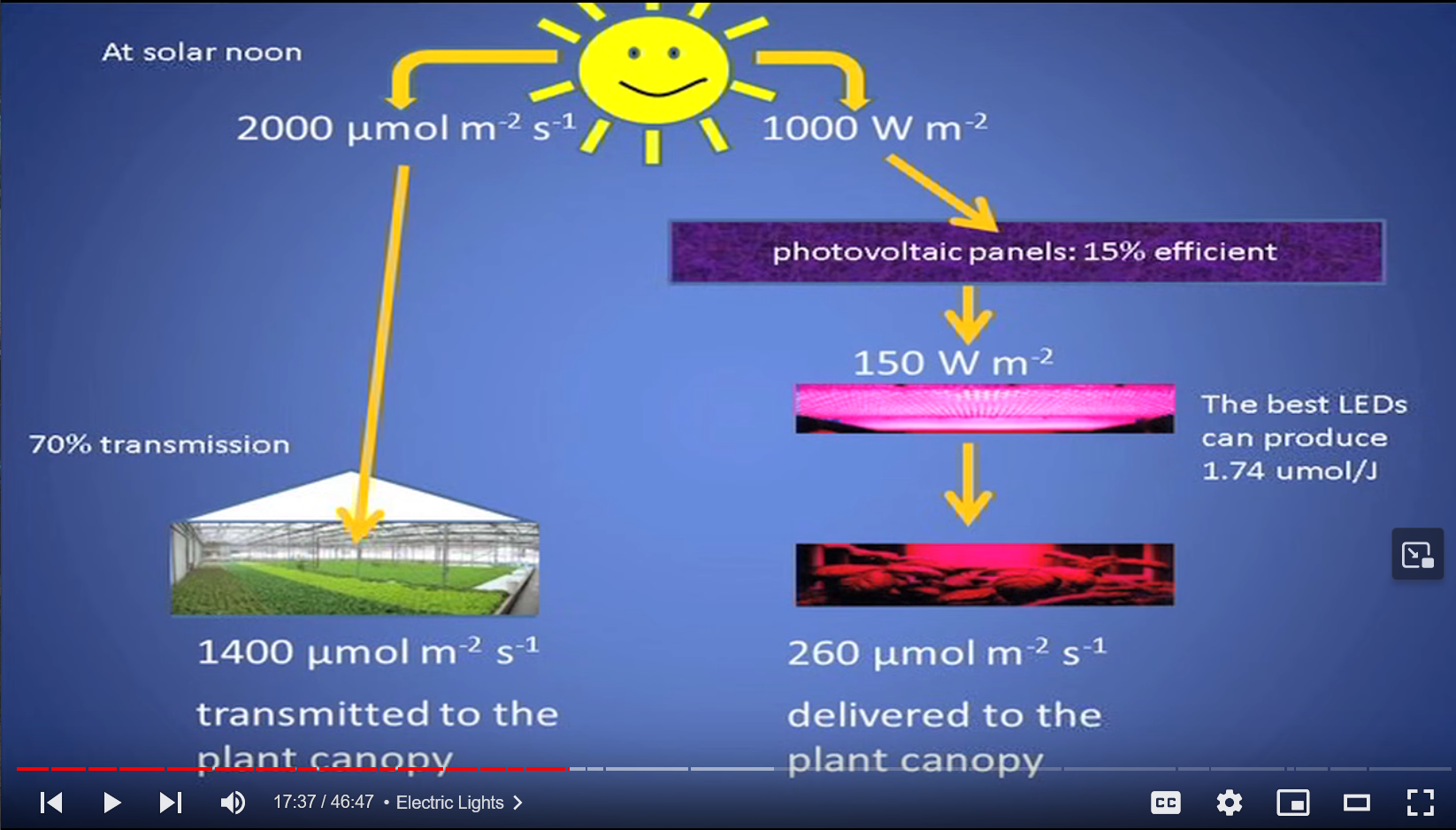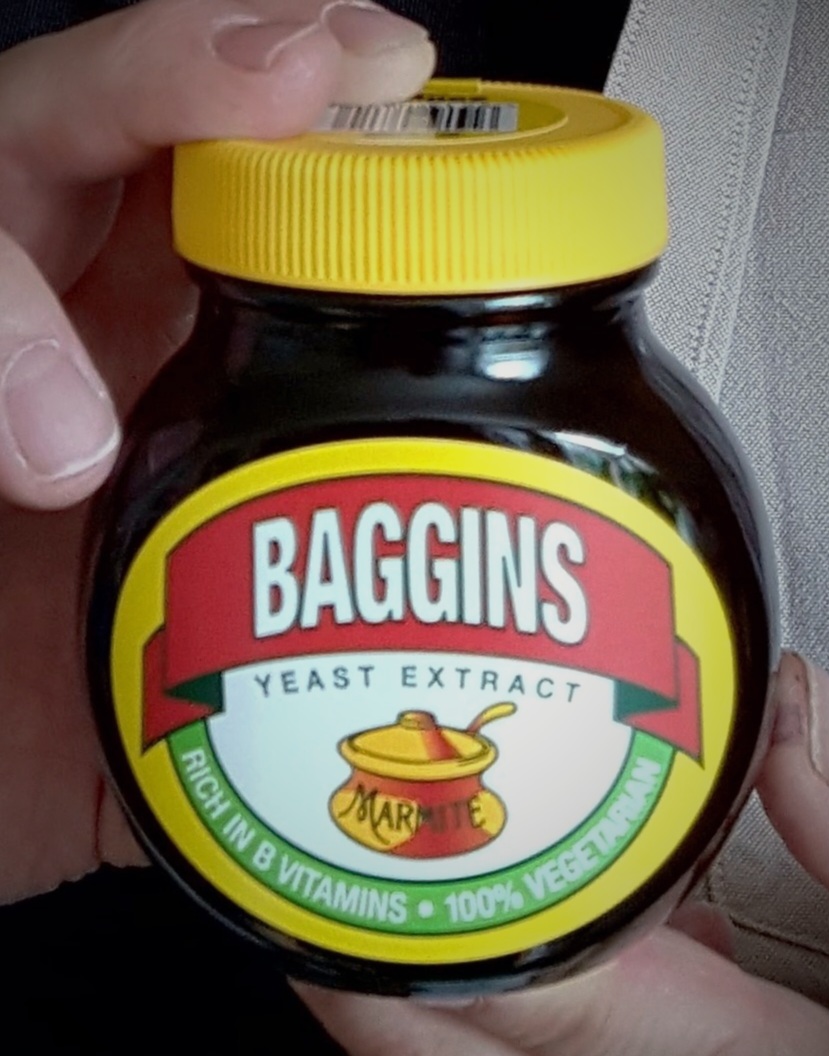With temperature, light and humidity controlled across 12 growing ‘rooms,’ pollination of plants has also been engineered to be more efficient than bees.
I need more details on this “more efficient than bees” claim. I grow a couple of hydroponic strawberry plants for fun, and every strawberry is a result of my swirling a toothbrush around a flower. I am having a hard time imagining scaling that up without bees.
Two words my friend: robot
beestoothbrushes
I have bo frame of reference for this, is it a lot? is it little? I have no idea I know an acre is big but I also know a million is big.
We’re talking 4 million pounds of produce. LOL, that’s such a wild number it cannot be possible.
https://www.gardensofeden.org/04 Crop Yield Verification.htm
And just like that… berries became “woke”. That’s good, though. More for me!
To be fair anything that is:
“backed by an international team of scientists”
Requires:
“temperature, light and humidity controlled”
And:
“the culmination of 200 research trials”
Is probably a bit sensationalist.
The Richmond farm uses 97% less land
Sounds too good to be true. Does this account for land use of the electricity production system?
For every 10sqm saved in farm area, how many extra sqm does the energy production require?
I know it’s possible to put solar on rooftop. But it’s also possible to have a greenhouse on the rooftop or last floor of a building, and greenhouses need almost no energy in comparison.
Solar over normal farmland used for hand/robot-picked plants that like a certain amount of shade is also an option. I’m curious how many acres of solar you’d need to support one acre of this scale of vertical farming.
Here is a great reply from the Low-Tech Magazin.
They’re great thoughts though I’d like to point out that most human made structures do no make use of the sun and so their complaint about having solar panels take up the same space is somewhat dubious.
The other comment I’d make is that they chose to highlight an experiment utilizing wheat. Mostly because we use a lot of it. However, humans could modify their diets to consume less wheat if we wanted to. There is nothing mandatory about consuming wheat and so we could focus on plants that need less light to grow.
I’d also like to note that the vertical farming stuff has very little innovation going on in the space because there is no demand for it at all currently. If there were demand, you may see alternative technologies taken up.
Alternative technologies like using mirrors to harvest the UV light and transport it without electrical costs and losses in reproducing it. Or mutating the plants in some ways. Or making better use of UV light by only targeting the leaves or such. Plenty could be done to innovate.
That all being said, I think vertical farming has absolutely no future. Mostly because the alternatives are so good. We could redo an entire farming setup. Or we could cut down on food waste. And cut down on meat consumption. And invest in lab grown meats. Lab grown meats that have a large potential to turn food waste into usable food. All of those are far better tech and this is a dead end concept I’m afraid.
Wheat is an amazing “invention” because it is so calorie dense compared to other crops, I would imagine (just guessing, no expertise in the area) that plants that grow with less sun don’t get to be as calorie dense because they have lower input energy - and ultimately the conservation of mass/energy is a physical law.
Maybe I’m miles off with this guess - so don’t take it as fact.
I don’t necessarily view the limiting factor as being the ultimate nutrient density per unit UV light.
Some compounding factors if you’d like to think about this more: UV light is not a monolith and so if you’re using artificial light you may be able to select for plants that still have high calorie yields but can accept a lower wavelength of UV that would lower power costs.
The same goes for water costs and just the general suitability for these vertical towers as well as what fertilizers work best for them.
The amount of optimization is one of the reasons I’m not hopeful for this type of project. There’s a ton of variables, you’re essentially making an entirely new form of farming and it’s a harder version of it. Meaning that it won’t experience the explosion of industry around it probably.
Currently, i see no alternative that doesn’t devastate ecosystems. I see a future in vertical farming, as knowledge and consciousness of that problem grows.
In the eventual future, sure. But that may be a century away. There are many other solutions that should be implemented before vertical farming that would actually protect ecosystems. The main thing would be pesticides. That’s what I’m far more concerned about than this mere concept.
I really do want to like the idea of vertical farms, and hydroponics in general as there are lots of benefits versus wild growing, but whenever I see some article claiming sustainability or a reduction in climate impact, it’s total bullshit.
All of these systems require massive amounts of nutrients to keep the plants alive and producing, and that essentially means all kinds of mining. The byproducts of these facilities are also toxic, and there is no regulation about how they have to manage that…yet. Essentially they are just taking the farm runoff problem and moving it from rural areas where it’s already bad, and transplanting it to denser urban areas.
If they could find better ways to streamline the acquisition of the fertilizer components needed for these facilities, and also the treatment or or disposal of the byproduct, these would be a much better idea.
you forgot to mention energy use. we have to simulate the sun and that aint cheap.
Well the power usage can vary depending on the setup. Some of these bigger facilities actually use sunlight, and there are other configurations that I’ve seen that plan to convert rooftops into growing spaces. The pump equipment takes quite a bit as well.
Runoff from a facility like this would be, in theory, easier to manage since it would be a concetrated source. A pipe of nutrient-rich water rather than a dozen contaminated streams and ponds. That also makes it feasible to recycle a lot of those nutrients, something that isn’t practical in a field.
Where I am from, farmland is cheap because of restrictions that prevent development or building on the land to preserve the areas ability to produce food.
But this doesn’t prevent the building of greenhouses, since it’s considered agriculture.
This results in many hundreds of acres of perfectly fine agricultural land being dug up and covered in gravel and concrete to build greenhouses.
It would be the same for vertical farms I imagine.
That’s fucked up. I can see it tolerated at very small scale, but if it goes above 10 acres in any state or small country, it’s a bit more than I’m comfortable with.
There’s no reason it couldn’t be a closed system, where any fertilizer that doesn’t become part of the crop biomass is recycled. In theory it should be more sustainable than existing agriculture and use less fertilizer per kg of crop produced.
Could be, but isn’t, which is where some regulations probably need to come in. I’m familiar with the systems Plenty uses, and it’s all automated.
Prime > start > feed > dump once dead
I’ve not seen another of these large scale startups doing anything different as of yet, which does make sense cost-wise. Any crop you grow won’t ever use an exact amount of nutrients at cycle end with a completely neutral byproduct, and trying to reuse what is left would require a lot of expensive lab efforts which they don’t care to invest in.
Example: say you start with a 9N-12P-34K solution, and after a month it degrades to 0-0-12. You can’t just refill the nutrients with that same mixture you started with, or you’ll damage or risk killing the crop with too much Potassium. You’d need to analyze the loop nutrients to know what level you’re at for each nutrient, and adjust to get the mixture right to recharge properly. Currently all these systems just dump and recharge because it’s cheap (for now) and easy, but these high concentrations of the various components just end up saturating an area the same as farm runoff. Even if you filter, that filtered medium needs to go somewhere.
There are fancier methods of nutrient filtration extraction and recapture just starting to become more feasible, and we should be looking at making sure these are being used for these large operations.
Could be, but isn’t, which is where some regulations probably need to come in.
I assume also that the technological side of things is far from perfected, but that will improve over time.
I mean, an urban environment flushes tons of fertilizer down the drain every day…
Human waste is not suitable for fertilizer.
Human waste could be used. It requires more processing to keep it safe, however.
There is also the complecating factor of chemicals. Night soil needs relatively little work. Toilet cleaner, however, needs more processing.
It’s currently nowhere close to viable to do in a city environment, that could be changed in future.
/nightsoil has entered the chatYou should probably look up how most of your rice and beans are grown overseas.
See my other replies to this person.
It’s not about the feasibility, but about the suitability.
I think a lot of people saw Matt Damon growing potatoes in human shit and thought it was legit and not specific to non-earth soil.
Of course it is. Or do you really think, cow and pig manure is fundamentally different from our shit?
The only difference are some germs, but that can be handled - otherwise water treatment plants would cause epidemics downstream.
It most definitely is not.
https://www.fda.gov/media/117422/download https://en.m.wikipedia.org/wiki/Night_soil
I believe some small pilot programs in EU allowed specific types of TREATED sewage to be used, but that’s a whole different thing.
So your argument against treated waste is, that it has to be treated first?
I certainly didn’t create the FDA, USDA, or medical science. Doesn’t have anything to do with me.
If you want to take a chance on it, go for it, but seems a lot of people who specialize in the field all say you’re wrong.
No, and if you would actually read the sources or dare to think for a few seconds you’d see that.
Human waste is not spent uranium that kills for millions of years with no way to mitigate that. If that would be the case, we would literally be drowning in shit right now.
Human feces contain some bacteria that can be dangerous, but that can be dealt with - again, this is exactly what every water treatment plant is doing. What do you think happens with all our shit? Do you think we fling it into space?
I don’t see how vertical farming can make sense. There is only so much sunlight striking the ground and you just changed the angle and so shaded something else.
Vertical farming can make sense. Effectively you capture energy from places or sources unsuitable for farming, and focus it into a small area optimised for farming.
E.g. farming on the side of a building doesn’t make sense. Covering the sides in solar panels however is fine. Wind can’t grow crops directly. Wind powered grow lights can.
Artificial lighting exists.
Sure, but where does the energy for that light come from? If the answer is burning things (this is the most likely answer today!) then you are making the world worse. Renewable answers all go back to the sun so why not use the sun directly and avoid all the inefficiencies from turning the sun into electric and then back into light? Which leaves nuclear - which is dieing because of expense.
Yes, it can come from renewables. There are many ways to build renewables in a way that doesn’t use additional surface area. Like you can have wild nature with wind turbines sprinkled throughout. Solar panels can built on top of most structures humans build anyway.
Vertical farming has the potential to use less land, allowing more wild natural ecosystems.
The controlled environment of vertical farming also allows you to work in a cleaner environment, meaning less need to employ pesticides.
We can also do agrifarming and use the space under the panels for animals to graze or whatever else they’ve come up with.
Photosynthesis only uses a couple frequencies. Using solar to generate electricity and feed that into target LEDs can be significantly more efficient.
while not wrong solar does not use most of the sun either and what plants use is where a large part of the energy is. Plus your add in the rest of the inefficiencies of the grid. So I’m back to not seeing how this can be enough better.
i’m sure you can grow plants this way I just don’t think you can ever make it a good way
Let’s assume the energy for lighting comes from solar. Panels are only 20% effective. Now your vertical farm needs 5x the space of a basic farm, and you still have to pay for power instead of using free sunlight. There is some video on YouTube from a salt lake city university professor who works for nasa on growing plants in space about this topic.
Why are discussing the logistics of such a complex project from such a singular perspective? Its pointless. They probably have their shit figured out.
Or make a collector and glass pipes in.
Sure. The solar panels don’t need to be next to it, but can be anywhere. Solar panels can even be used on traditional agricultural fields while still growing vegetables or grazing animals. Using solar panels on surfaces like roofs or above parking lots is another way of placing them without using additional ground.
Consumer panels are up to 23.5% now, and you can get bifacial cells that can boost that by up to 30%, so up to around 30.55%
Also the light is bouncing around that room, not bouncing off and then back into the sky like it would from the sun, and it’s not necessarily all full spectrum, it’s the spectrums the plants need, also reducing power compared to what the sun gives it.
Edit: Making shit up now, but what if photosynthesis only needs 30% of the spectrum, and the bifacial panels are 30% it might even be near equal.
You realize that this picture addresses nothing of what I said? It’s using 15% when we can get 30%. And still has nothing about what spectrum the plants actually need of what touches them.
Edit: Also a quick search showed 2.9umol/j leds now, and maybe we have higher, so that’s up to 870 (3.5x more than image or 62.14% of the sun) hitting the plant now of exactly what it needs instead of 1400 that isn’t all what it needs.
Edit: another article from 2017 says the theoretical maximum for LEDs is 4.9-5.1 and we should reach 3.5 within a decade (2027). Also I think I didn’t understand the measurement and the 1400 from the sun is the 1400 it needs, but I’m not completely sure.
Also that’s 9 years old,
Read the article - it’s indoors.
That doesn’t change anything. unless you have a perpetual motion machine the energy comes from somewhere.
Eh?
On second thoughts, don’t bother.
Goodbye.








